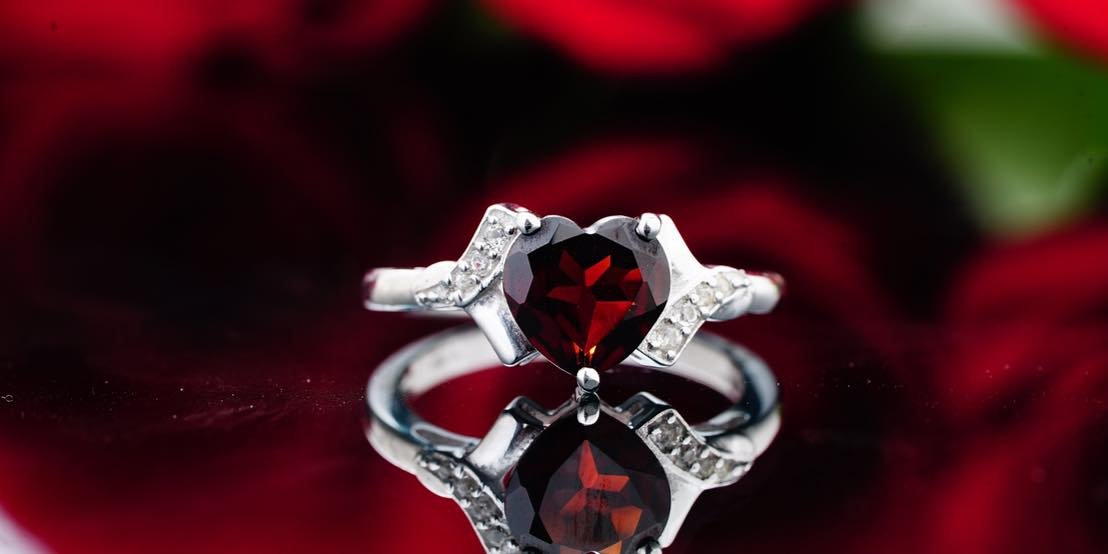Precious stones and their types

Precious stones
According to the science of gemology, gemstones are divided into two groups: precious stones and semi-precious stones.
There are only 4 true gemstones: diamond, ruby, sapphire and emerald.
Contrary to what most people think, the only reason why stones are classified as precious is historical. In fact, around 500 years ago, the powerful of this world were only interested in these four stones. At that time, the other stones had no value. It was these four stones that stood for wealth and power. It is for the same reasons that it is still the most precious stone today.
All other precious stones, such as opal, quartz, alexandrite and many others, are semi-precious stones. And while they are certainly not completely cheap, they are certainly below the price of real gemstones. Sometimes you may still see jade, opal or pearls included in precious stones, but they are still considered semi-precious.
Diamonds are the most brilliant of all transparent gemstones. They reflect light exceptionally well - even with the slightest twist, this stone will sparkle and draw attention to itself. Diamonds are also the hardest material in the world. They can only be scratched with other diamonds. It is no coincidence that the word 'diamond' is derived from the Greek word adámas, meaning 'invincible'.
Diamonds are graded on the 4C system, which we wrote about in our next article.
Ruby is a red variety of the mineral corundum. The red colour is due to chromium impurities. Rubies are the hardest natural minerals after diamond Ever since ancient times, when rubies adorned the robes and jewellery of kings, the ruby has been prized and considered one of the most special gemstones. It was believed that a person wearing rubies would inevitably have good luck. The stone symbolised power and authority. Others, however, believed that this stone symbolised love, probably because of its rich red colour. Red radiates warmth and a strong sense of vitality.
Some rubies have a wonderful silky lustre, known as ruby 'silk'. This phenomenon is caused by the very fine needles of rutile. Occasionally, one of the rare stellar rubies is also found. The mineral rutile is also involved: when ruby forms star-shaped deposits, it produces a fascinating luminous effect known by experts as asterism.
For thousands of years, ruby has been considered one of the most valuable gemstones on Earth. It has everything a gemstone should have: brilliant colour, superb hardness and exceptional sparkle. It is also an extremely rare gemstone, especially in its finer qualities.
The value of a ruby is always influenced by its weight and unique colour. The latter can vary in a fairly wide range of red colours, from pink to bright, rich red.
Ruby is the suggested gemstone gift for 40th wedding anniversaries. A Ruby wedding is a celebration of true love, preserved in spite of all the hardships and twists of fate in family life.
Sapphire, called the most popular coloured stone on the market by many gemstone experts and trend followers, has been the traditional birthstone for September since 1912, when Jewelers of America compiled a modern birthstone list.
Its purpose as a talismanic gemstone is rooted in the Bible, as one of the 12 stones for each tribe of Israel that adorned the breast of the high priestess. In the history and legends of almost all religions and cultures, the sapphire has always been associated with sacred and royal things.
The sapphire associated with the third eye chakra is believed to give energy for reflection and insight. Inspiring peace, joy, wisdom and prosperity, the sapphire is said to illuminate the true inner beauty of those who wear it.
The jewel of the heavens, the name sapphire is derived from the Latin word "blue sapphirus", the colour of which is best known. The intensity of its blue colour is the main factor determining its value. Although sapphire has many shades of blue, the most coveted shades are 'royal blue' and 'cornflower blue'.
In addition to the variety of colours, sapphire can resemble stars, known as asterism, caused by dense inclusions of fine fibres of the mineral rutile (also known as silk). The star (usually six rays) is caused by the reflection of light from the parallel inclusions within the stone. Because star gems contain rutile, they are rarely completely transparent. The black star sapphire owes its star and dark colour to the inclusion of hematite crystals.
There are also sapphires that change colour when exposed to different light sources, and the most common transition for this extremely rare variety of corundum is from blue to violet-purple.
Sapphire has a sparkle and durability close to that of a diamond, so it's no wonder it's a popular alternative to diamonds in weddings. "According to a study by The Knot, around 10% of engagement ring centres are made up of coloured stones, whereas until recently they were almost non-existent. Brides are also adding coloured stone accents to the traditional diamond centre or in bands around it. Kate Middleton, Penelope Cruz and Elizabeth Hurley are some of the most famous brides to have been proposed to with sapphire rings.
The sapphire is the suggested gemstone gift for the fifth and 45th wedding anniversaries, but as a symbol of truth and keeping promises, it's the perfect way to celebrate each passing year together.
Emerald is a variety of the mineral beryl, chemically beryllium aluminosilicate Be3Al2(SiO3)6 with impurities of chromium and vanadium ions. It is these impurities that give emerald its green colour (hence the name: Gr. emeragdos 'green stone').
Emerald is one of the most historic gemstones. It has been treasured for 6000 years for its beautiful green glow and legends abound. Ancient Egyptians believed it symbolised fertility and rebirth. It was associated with the Greek goddess Venus, who symbolised love and beauty, and in several different cultures, such as the Chinese and the Irish, the emerald has long been a symbol of good luck. It is said to protect lovers from infidelity - if the heart is true, the gem will glow a beautiful green colour, but if the heart is lost, it will turn a different, lifeless colour (although this is of course related to the quality of the stone).
Emerald is even credited with the ability to improve memory and intelligence, and to turn negativity into positive emotional energy. In the Middle Ages, emeralds were believed to keep a woman virginal - but of course they meant "happy".
The only thing you can rely on an emerald for every time is the beauty of any piece of jewellery. Top quality emeralds are more valuable than diamonds. And besides, for several years in a row now, green has remained very popular in the fashion world.
Emeralds are very valuable, despite the fact that most of them are saturated with tiny mineral inclusions or fractures called jardin, from the French word for 'garden'. Colourless emeralds are rare and extremely valuable.
The emerald is considered to be the gemstone of the month of May, of Tuesday, of the spring season, of the 20th and 35th wedding anniversaries. In numerology, the emerald is associated with the number four.






Comments : 0